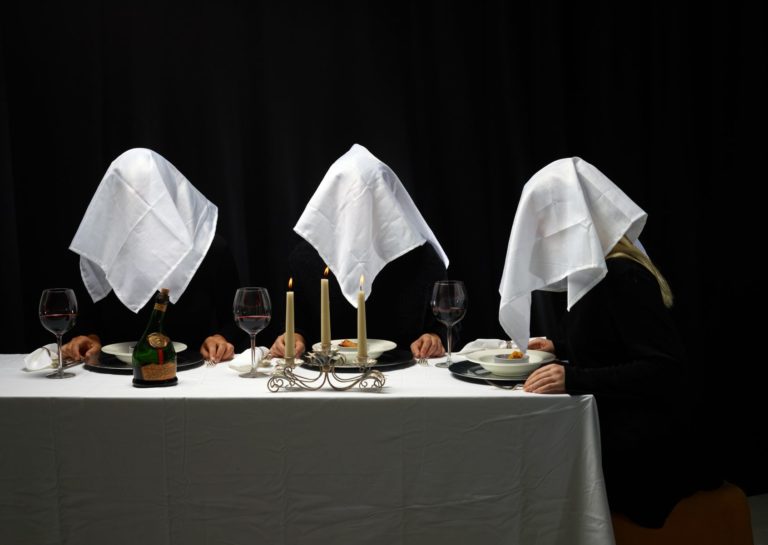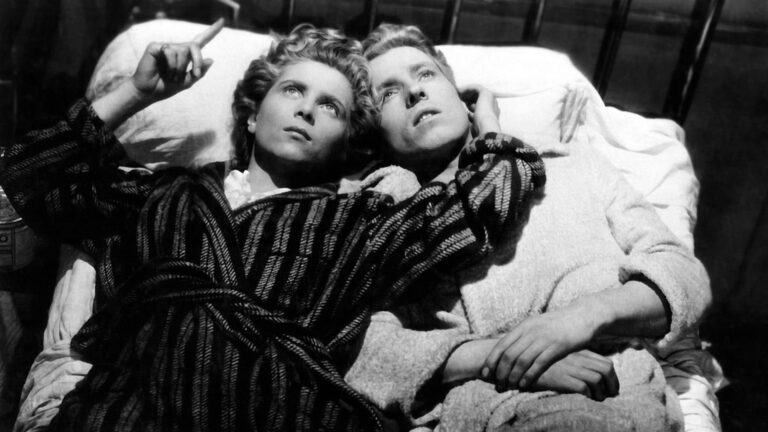SHE/HER/ME
an opera film installation
JEAN COCTEAU – FILM & DIALOGUE
PHILLIP GLASS – MUSIC
JORINDE KEESMAAT – CONCEPT & STAGING
MOLLY JOYCE – NEW COMPOSITION
‘Audience and performers are held captive in the Underworld, a labyrinth of projected images, looking for the way out, for light. Cocteau’s archetypal characters and the live performers come together to reflect on the here and now. What do I feel? What am I allowed to become? Who am I, in relation to you?Three contrasting love stories, all creations of the masculine heart and brain. Dysfunctional relationships, all paralyzed. Deconstructing Glass’ Cocteau trilogy and building a new piece with the reflective music by Molly Joyce helps me create a new “fluidity” in the brother/sister, man/woman, father/daughter relationship. I’ll remix them, creating space for the feminine perspective. The production re-examines how women define themselves not in relation to men, but as independent, autonomous beings. SHE/HER/ME is an opera / video labyrinth in which our search for autonomy begins’
Jorinde Keesmaat, initiator and stage director
SHE/HER/ME is a newly constructed opera-video-installation around the works Orphée, Les Enfants terribles and La Belle et la Bête by American composer Philip Glass and French artist and filmmaker Jean Cocteau. Dutch stage director Jorinde Keesmaat presents a rework of the Cocteau trilogy in which three couples take the stage: Orpheus and Eurydice, Paul and Elisabeth, Beauty and Beast.
In his films, Cocteau is constantly searching for his inner self through his characters, by confronting them and making them explore the subconscious, from where an artistic and erotic voice responds. SHE/HER/ME revisits the discovery of the self from a female perspective. We all have a beast inside us. When it stirs, we have learnt to keep it quiet. Instead, we learn to behave like Belle: beautiful, innocent and pure. Following the six characters from the three different stories on their journey, the audience is invited to discover, confront and embrace their inner beast. Because when we let it roar, it can empower us, make us feel unstoppable and free.
Sharing the same space, both audience and performers dive into the magical and surrealist underworld created by Cocteau’s cinema and the hypnotising pulse of Glass’ music, where they are held captive in a claustrophobic labyrinth of projected images. The only way out is looking inwards. Guided and confronted by an enigmatic angel-deathlike performer, the three couples try to break free from their confined identities. What do I feel? Who am I, in relation to you? Who am I allowed to become? Alongside Cocteau’s cinema and Glass’s music, emerging artist Molly Joyce – deemed one of the “most versatile, prolific and intriguing composers” of her generation – is invited to create a new musical world in which the beast gradually emerges from under the surface, until it is finally and fully liberated.
SHE
In Cocteau’s retelling of the Greek myth, the poet Orphée is obsessed with finding artistic inspiration. Glued to the radio, he tries to make contact with the young handsome poet Cégeste, who mysteriously met his death and now sends cryptic messages from the underworld. Eventually, Orphée meets and falls in love with Death, while completely losing interest in the pregnant Eurydice, a 1950s housewife. If Orpheus responds to his inner beast, Eurydice caters his narcissism by being sweet and understandable at all times, until she ultimately dies on his behalf.
HER
In Les Enfants terribles, a similar love triangle evolves. Two siblings, Elisabeth and Paul, shut out the outside world to play their own secret, incestuous “Game”. One day, Paul is hit by a snowball by the handsome schoolboy Dargelos. His obsession with the schoolboy is later transferred to Agathe, a young woman who is the splitting image of Dargelos. Through Cocteau’s visual association, the audience is capable of perceiving the love between Paul and Agathe not as a heterosexual, but a (sublimed) homosexual relationship. Paul’s sister Elisabeth, on the other hand, shows a fearlessness and strength that would widely inspire young bohemian female artists who discovered Les enfants terribles in the ‘30s.
ME
In La Belle et la Bête, the force separating the two protagonists is society, that condemns their unconventional relationship. In Cocteau’s retelling of the fairytale, it is only in death that both lovers are finally united. In SHE/HER/ME beast and beauty not so much find each other in the afterlife but are incorporated into the same body. Beauty becomes beast.
This alternative ending calls for a new beginning. Together, two female artists (Dutch director Jorinde Keesmaat and American composer Molly Joyce) turn Glass’ Cocteau Trilogy into a struggle for freedom and independence. Starting off in the adult world of the contemporary poet Orphée, before slipping into the minds of two children on the brink of adolescence, the performance evolves towards an openness that is required to believe in fairytales. What happens when we acknowledge the beast inside? What kind of person emerges and how do we celebrate them? SHE/HER/ME invites the audience to take part in a process of self-discovery, led by an enigmatic angel/deathlike character, while being caught up in the nocturnal surrealist world of Cocteau and Glass.
Glass’ Cocteau Trilogy
“Woke up this morning after a night in which my dreams were stirred up like dirty water and formed absurd moires.”
– Jean Cocteau, La belle et la Bête, journal d’un film (1985)
Orphée, Les Enfants terribles and La Belle et la Bête are among the most fascinating cinematic works directed and/or written by the 20th-century French artist Jean Cocteau. Each film represents an ongoing search for the subconscious, which the artist is obsessively drawn towards and where reality is left for a dreamlike, magical and symbolic underworld. The “zone” which Orpheus wanders through in search of Eurydice and Death, “the Room” where Paul and Elisabeth play their secret “Game”, the castle of the Beast: in each of Cocteau’s films, a place is endowed with an alienating intensity in which fantasy, myth or dream become reality. Scenes are filled with objects that convey deeper meanings, such as the mirror: by confronting the self, the mirror functions as a gateway, a magical looking glass that Cocteau conjures up using liquid mercury and early experimental filmmaking techniques such as reverse motion and slow motion. In each film, a supernatural or otherworldly character enters the ordinary world of the protagonist. It is the muse, death, the subconsciousness of the poet himself, luring the artist into another realm.
When American composer Philip Glass set Cocteau’s films to music, he experimented with the possible relationships of opera to film. For every film, he took a different approach, setting the entire libretto to music (Orphée), introducing dance (Les Enfants terribles) or, in its most radical treatment, replacing Cocteau’s entire film with new instrumental and vocal music, painstakingly synching every spoken syllable (La Belle et la Bête). By doing this, Glass explored new ways of conceiving a live ‘film opera’. Glass’s distinctive composition style makes the underlying tension in Cocteau’s works palpable to such an extent that it at times evokes a hypnotizing and even unsettling experience.
“I believe that what happens at that moment is that I’ve lost awareness of myself. That
awareness is now part of the attention and with that attention I can continue the work.”
– Philip Glass, Words Without Music, A memoir (2015)
Producers
UNUSUAL SUSPECTS, NETHERLANDS
Frank Veenstra
+ 31 6 10 91 76 48
Neil Wallace
neil@weareunusualsuspects.nl
+ 31 6 53 48 66 74

